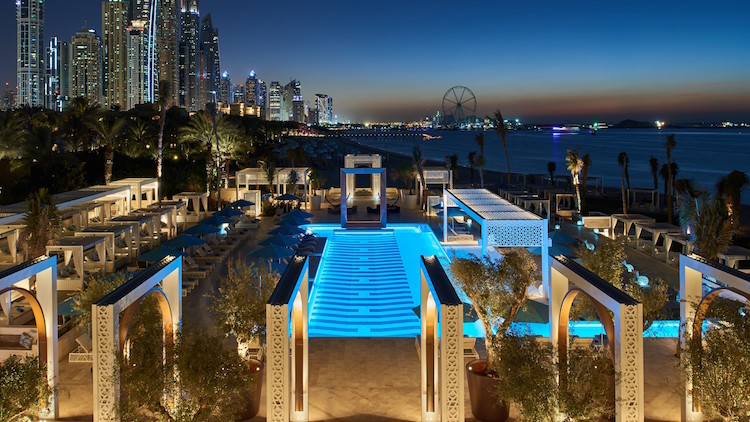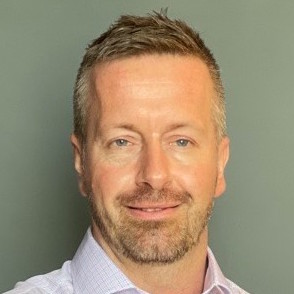
15 months ago BIMplus spoke to Andy Boutle, then head of BIM at Kier Construction, about the contractor’s progress on BIM and digital and his work with the UK BIM Alliance and the BSI standards committee. It came as something of a surprise as 2021 wound down to find him leaving Kier after eight years for the sunny climes of the United Arab Emirates and the post of head of digital construction at Dubai-based mega-project contractor ALEC Engineering and Contracting.
We grabbed 30 minutes of his time to catch up and find out how he’s getting on at ALEC (pronounced “Alec,” Boutle explains) and to discuss some of the differences he’s found so far between Dubai’s and the UK’s approaches to BIM and digital construction.
What attracted you to the job at ALEC?
I wasn’t actively on the lookout, originally, at the point when I was approached by a UAE-based recruiter on LinkedIn. A Teams interview was set up with ALEC’s recruitment team, and the more I spoke to them, the more it felt right.

‘Dubai’s transitioning: a lot of the UK’s 1192 standards are followed here, but ISO standards are also gradually emerging in clients’ requirements’
ALEC has a really strong reputation here and they’ve got a world-class way of working – they break the norm for how contractors typically behave and operate here. There’s something a bit different about ALEC: they’re really forward thinking, really innovative.
What are your key tasks and challenges?
As part of ALEC’s business strategy through to 2026, there are goals for digital transformation, BIM and information management. Working with ALEC’s leadership team, I’m now contributing to developing the delivery strategy.
Based on my time at Kier, I have some ideas of how to meet those goals. We’ll be going for the ISO 19650 Kitemark from the BSI, and we’re on-boarding some new tools and consolidating others.
I manage a team of eight BIM specialists, whose roles are advancing and evolving into digital construction managers and coordinators.
We’ve won quite a few big projects recently, so I’m also focused on streamlining the information management and digital aspects of their undertakings.
Are you working with lots of expats?
One of the nice things is the blend of different cultures and backgrounds that I’ve never come across before. We’ve got English, Irish, South African, Indian, Pakistani, Filipino: you name it, we’ve probably got people from most walks of life and cultures – it’s an amazing melting pot of skills and culture.
How does BIM and digital construction adoption in Dubai compare with the UK?
There are lots of similarities and some quite interesting regional nuances. Let me just say that one of the first things I noticed was that I’ve inherited a really skilled team: they’re quite experienced and know what they’re doing.
Dubai’s transitioning: a lot of the UK’s 1192 standards are followed here, but ISO standards are also gradually emerging in clients’ requirements.
One of the biggest differences here is how the CDE is perceived and expressed: I’m still scratching my head a bit: you often get people talking about the document management system separately to the CDE, which is seen as mainly for model exchange.
‘Clients here appear to be much more prescriptive in what software they want their supply chain to use’
Out here, pretty much all clients use Aconex, and they ask their supply chain to use it as the formal document management system for contractual information and communication, so effectively the published area of a CDE in my head. Then there’ll be a project CDE, which will be [another system potentially]. The thinking seems to be that the CDE is for model exchange and submission specifically, not the collective information model.
The other interesting thing is that in the UK clients will mostly specify deliverables and let the supply chain choose which tools they want to use. Clients here appear to be much more prescriptive in what software they want their supply chain to use. That can create challenges for contractors and their supply chains.
And where is ALEC at the BIM and digital construction adoption curve?
This goes back to why I took the job. ALEC really believes in BIM and digital and doesn’t want it to treated as an isolated system: the leadership wants each department to play its part and to take responsibility. There was a lot of work done by my predecessor, who really knew his stuff and built a BIM framework document resource for ALEC that detailed the different responsibilities that different disciplines and departments should be taking on in the wider process.
It was great to land here and see that the business was already quite mature in its way thinking and operating.
I’ve developed a BIM/digital 1-0-1 video to ensure everyone has a similar level of understanding: of course, there are different levels of knowledge and assumptions across the business.
ALEC is really mature in the innovation space. We have an innovation manager and he’s got a really good framework for how to generate, collect, review and implement ideas from around the business on different topics, in terms of technology, process and culture. That merges nicely with what I’m trying to do.
Which software or tools have caught your attention then?
ALEC uses Synchro for construction simulation, but is currently evaluating Fuzor, which looks like a really good alternative. Its animation functionality means you can almost use it for work-winning simulations and as a proper sequencing tool for construction too.
Another one that I knew from the UK that I’m really pleased with and it’s really getting traction with the team here is Morta. We’re building all of our ISO 19650 resources using Morta’s online platform for most spreadsheets and documents rather than using the traditional Word and Excel. The more I dig into it, the better it is. I think it’s going to be a really powerful tool for us.
How do you look back on your time at Kier?
Very, very fondly. I’m still in contact with a lot of people from Kier: I left on good terms. I wasn’t unhappy at Kier: this opportunity presented itself and the timing felt right.
Do you have any advice for any of your UK peers and colleagues who might be contemplating a move to Dubai?
If the opportunity is right, go for it. Dubai is lovely place to work and live in.
I’ve spoken to a few people at ALEC who originally came with a four-year plan in their heads, but they’ve now been here ten years-plus.
- Don’t miss out on BIM and digital construction news: sign up to receive the BIMplus newsletter.












